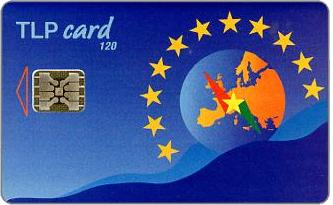Cards with electronic chips are becoming increasingly popular all over the world, and their spread is unstoppable; most of the international Telecom companies in fact adopted a public telephone system that uses this technology from the beginning or after using other systems. These cards have an electronic chip inserted into them, in which units and information are stored. The units are read by the phone when the card is entered, and then the call can be made, after which the remaining units are recorded on the chip, which will be read again by the phone the next time: this process has remained virtually unchanged since the system was tested the first few times.
The chip has connections in gold (or sometimes in silver or nickel) that may have different shapes depending on the manufacturer. Sometimes the same type of card is produced by different manufacturers, and this creates interesting variations from the collectors point of view; each type of chip has its own identification code, and so it is not difficult to catalog the variants.
Chip-based phone cards were first used in France in 1984, and the first manufacturers were Bull CP8, Schlumberger and Solaic; Most of the electronic modules were produced by Schlumberger, Gemplus, Orga, GPT, but there are many other manufacturers around the world that use chips produced by themselves or supplied by Philips, Siemens, Thomson, and other companies.
Following the success of the phone cards, multifunctional cards also appeared, for which the use in telephony is only one of their many functions. These cards, also called smart cards, usually have larger chips, which contain more memory, which allows you to use them in a more versatile way: as a phone card, ticket for public transport and parking, personal identification card or medical, over that for bank use.




















